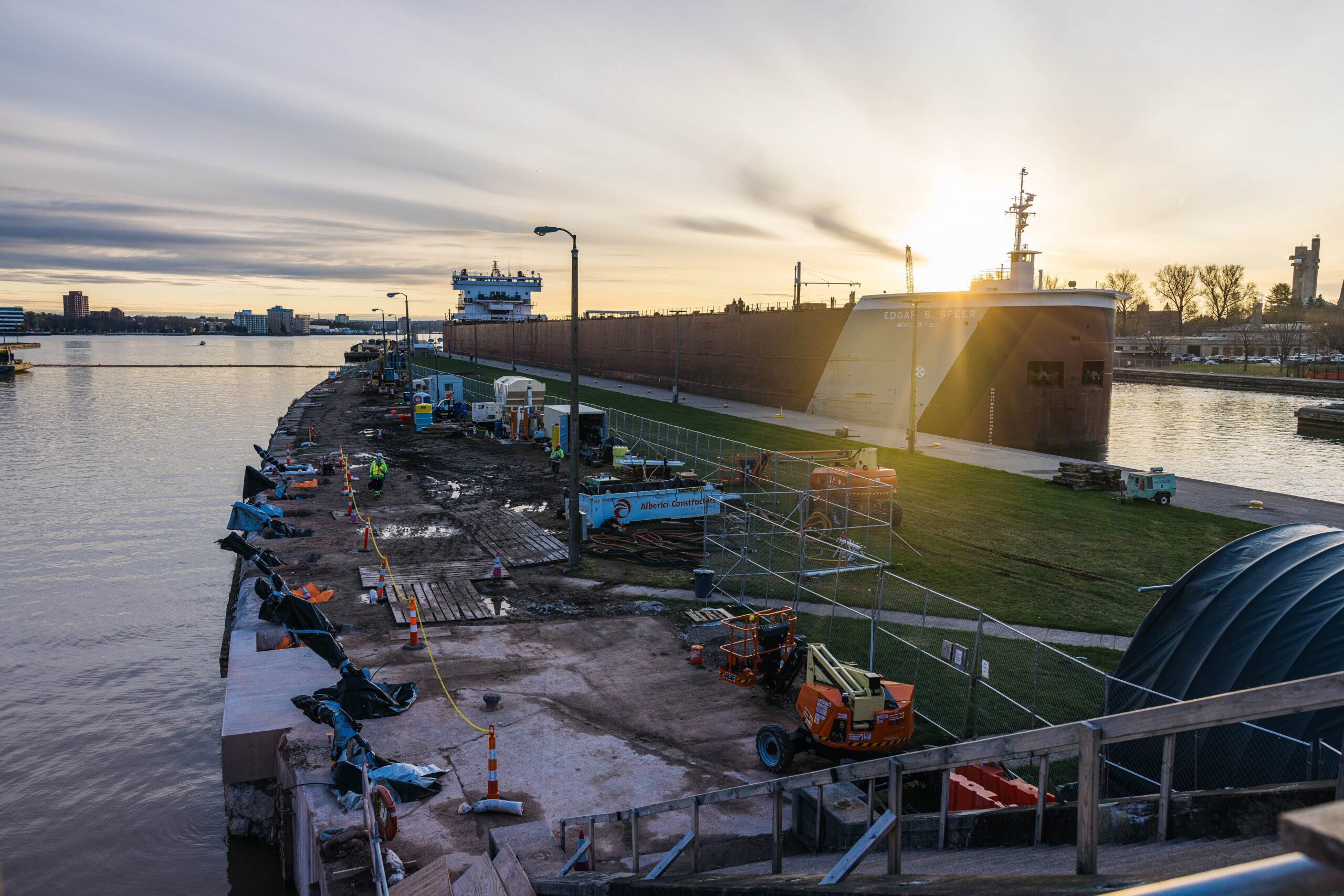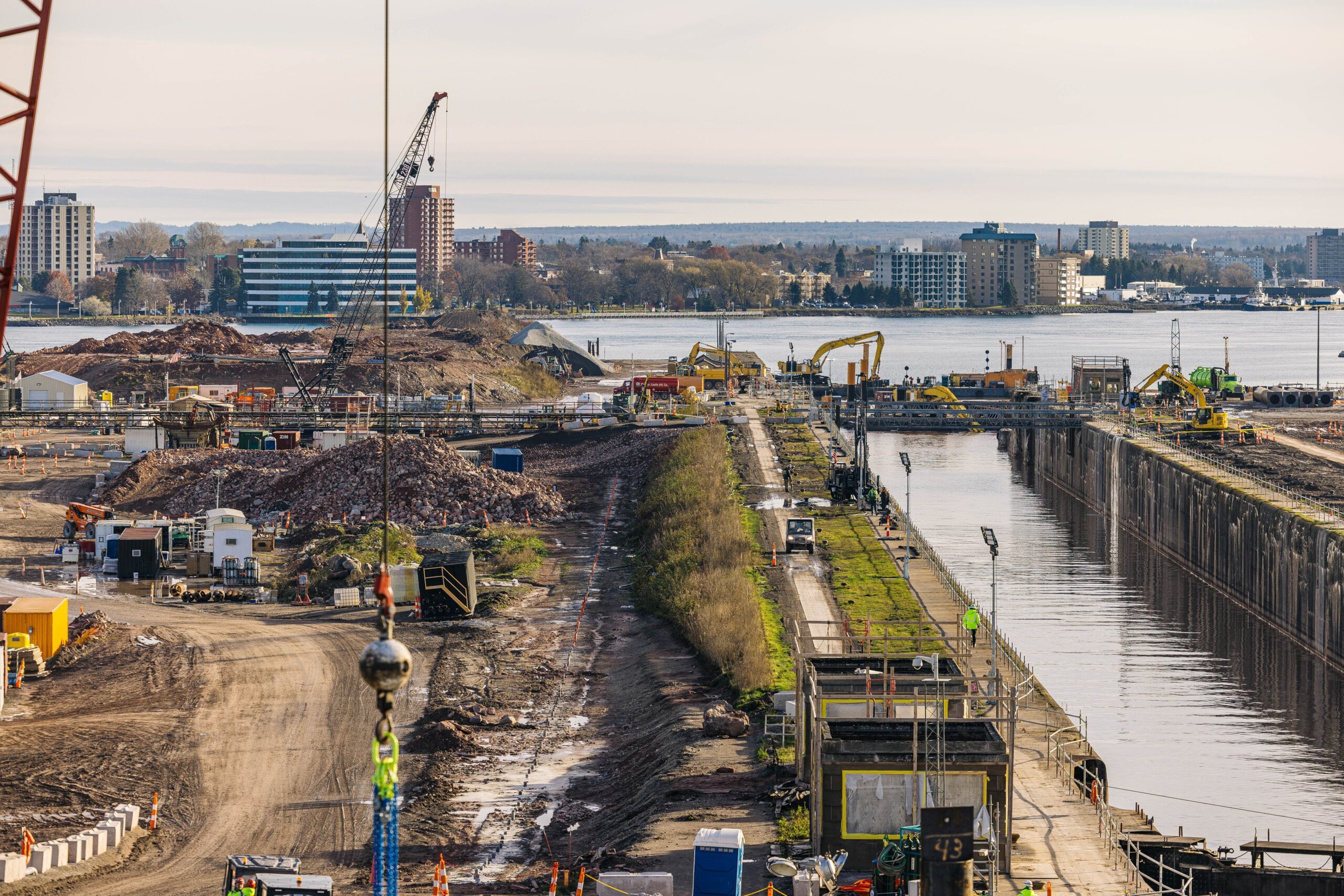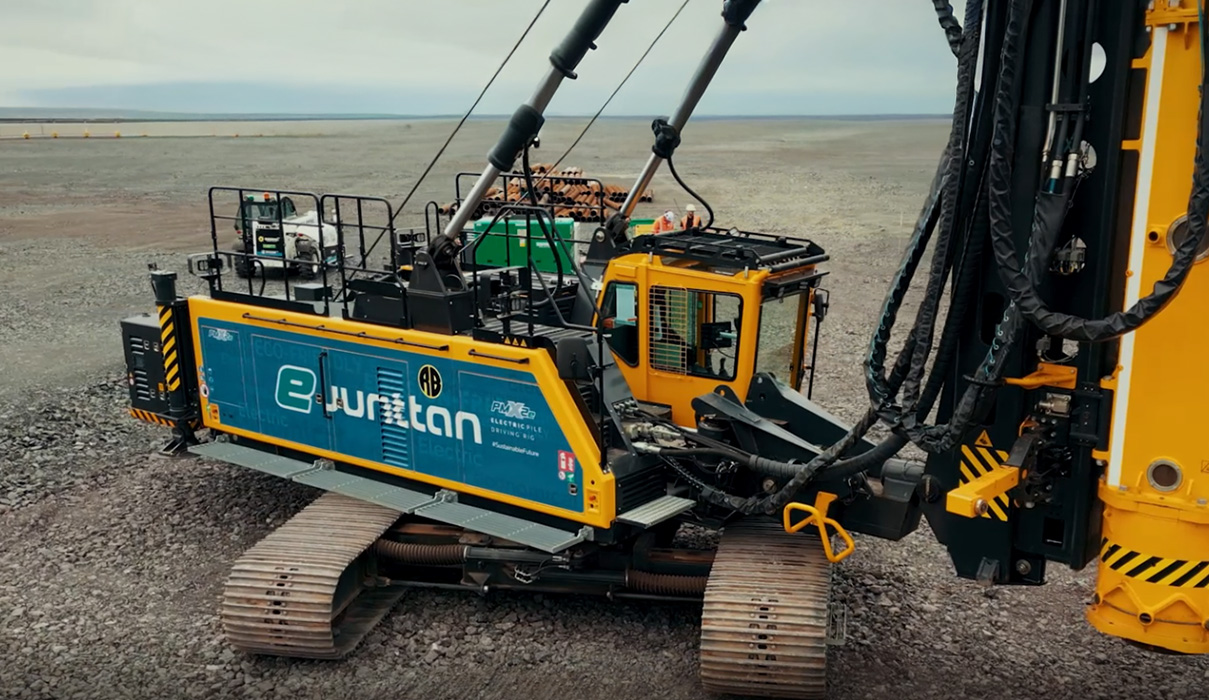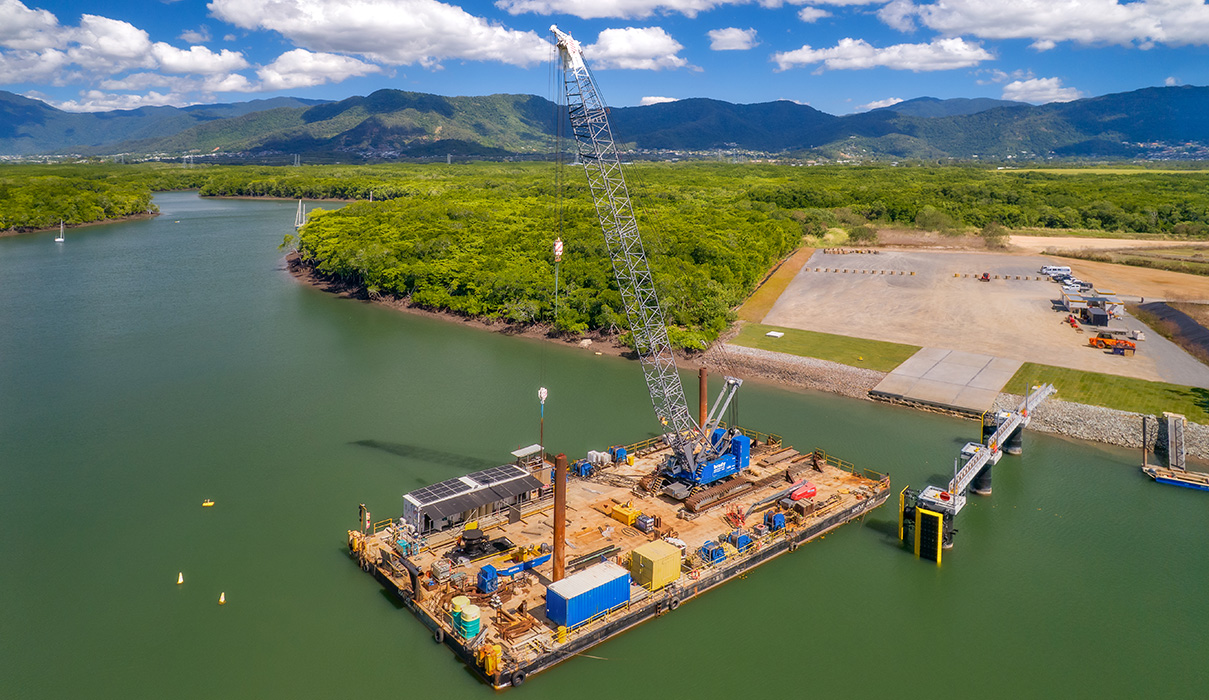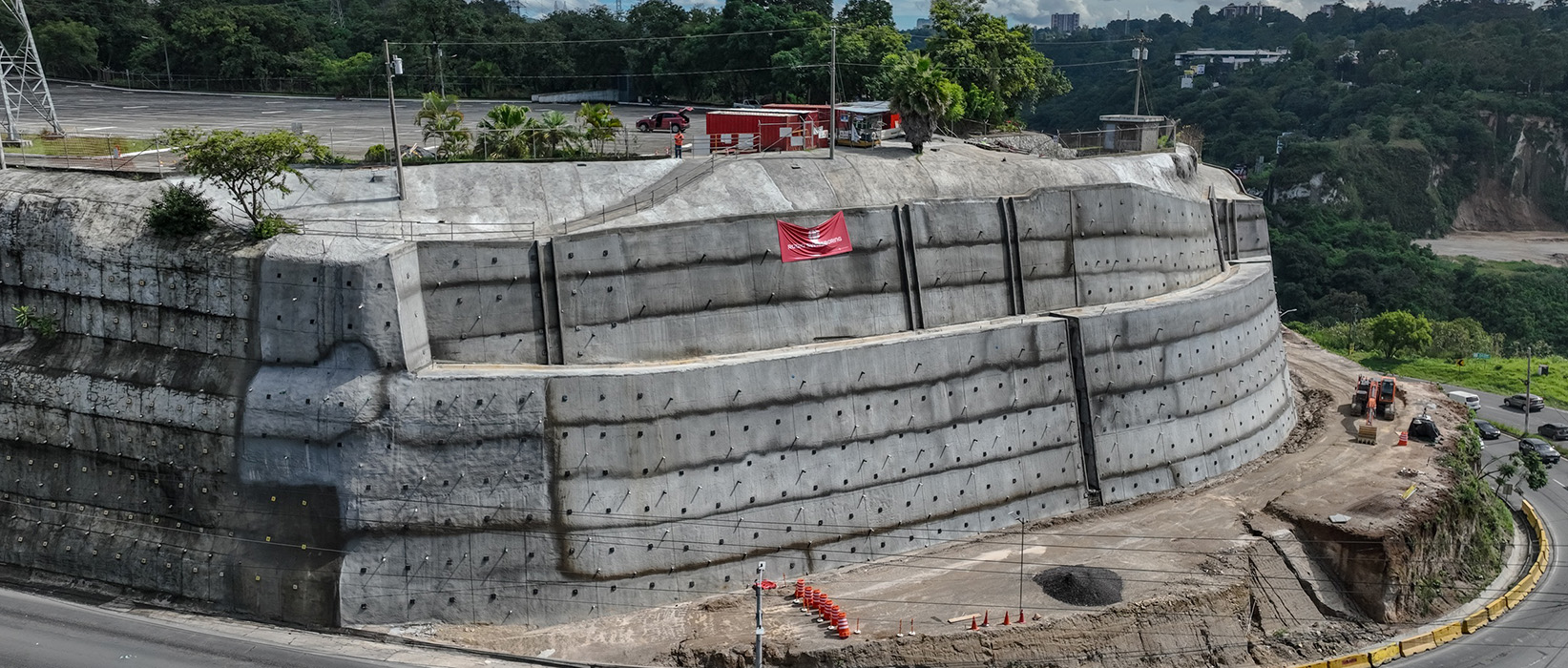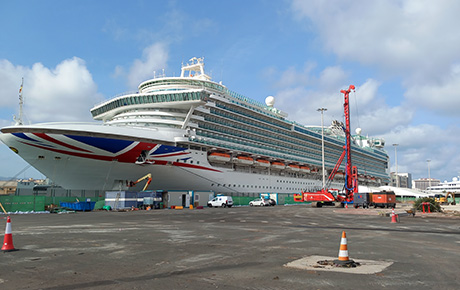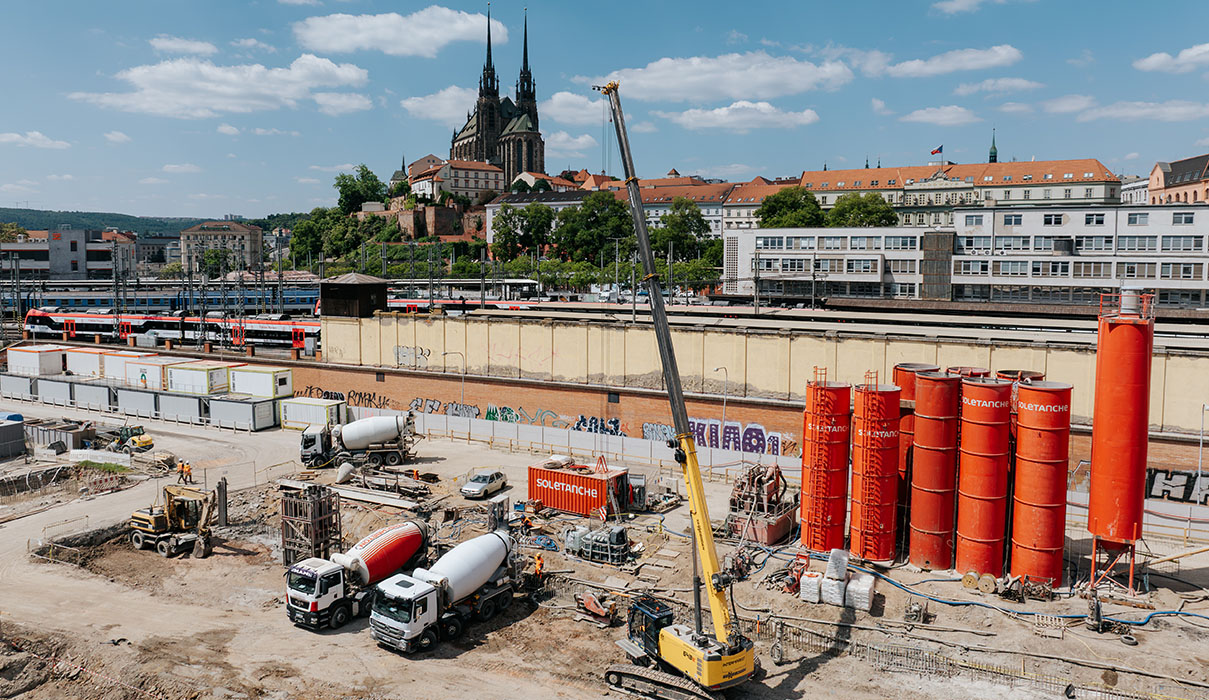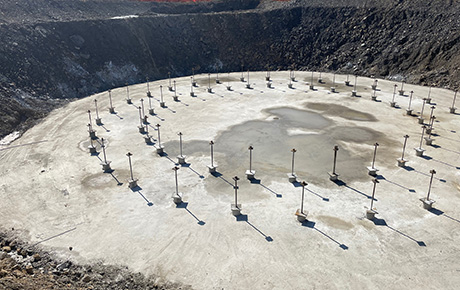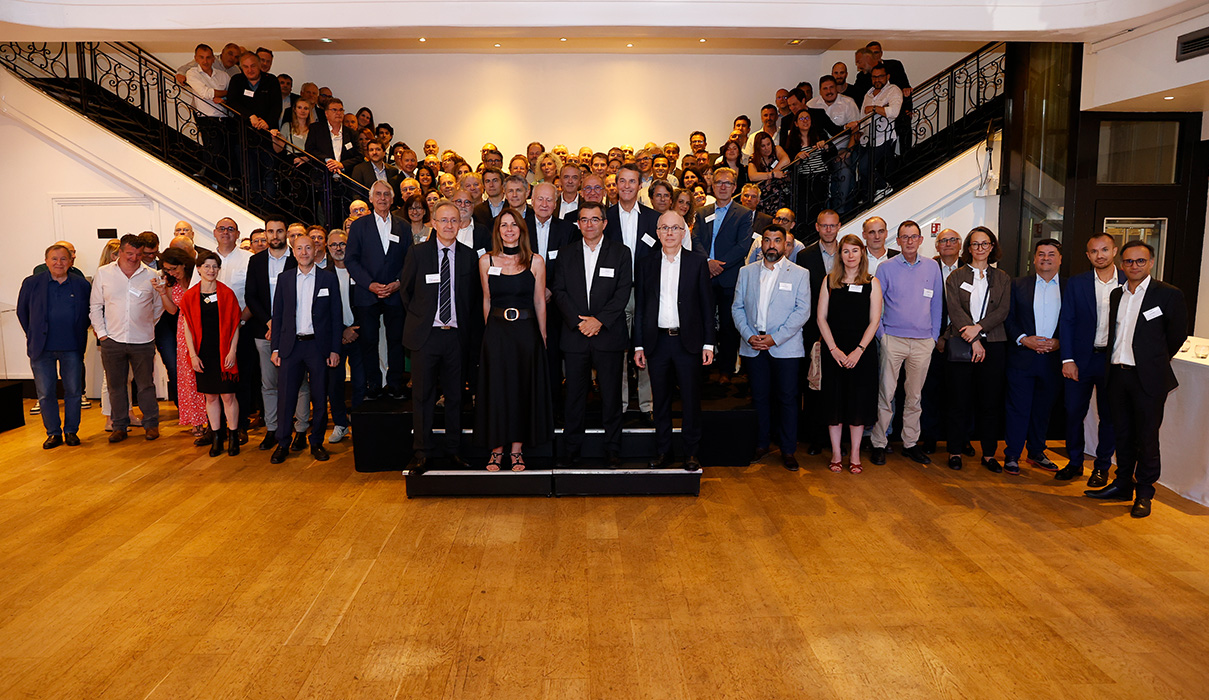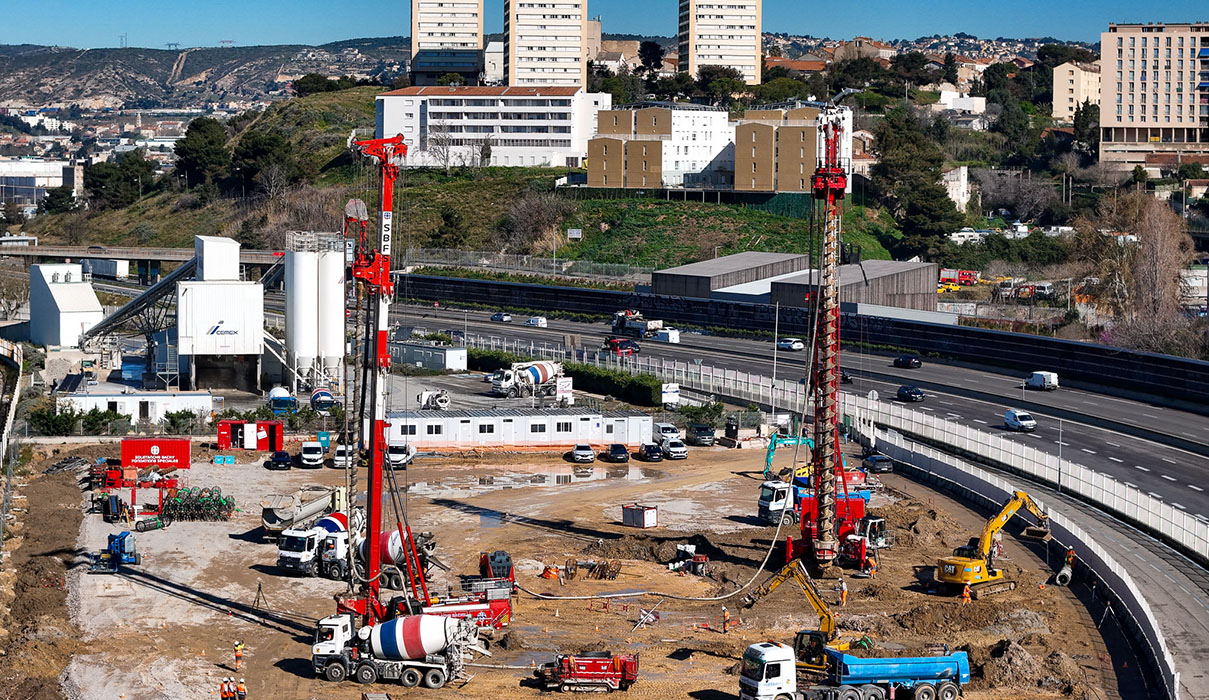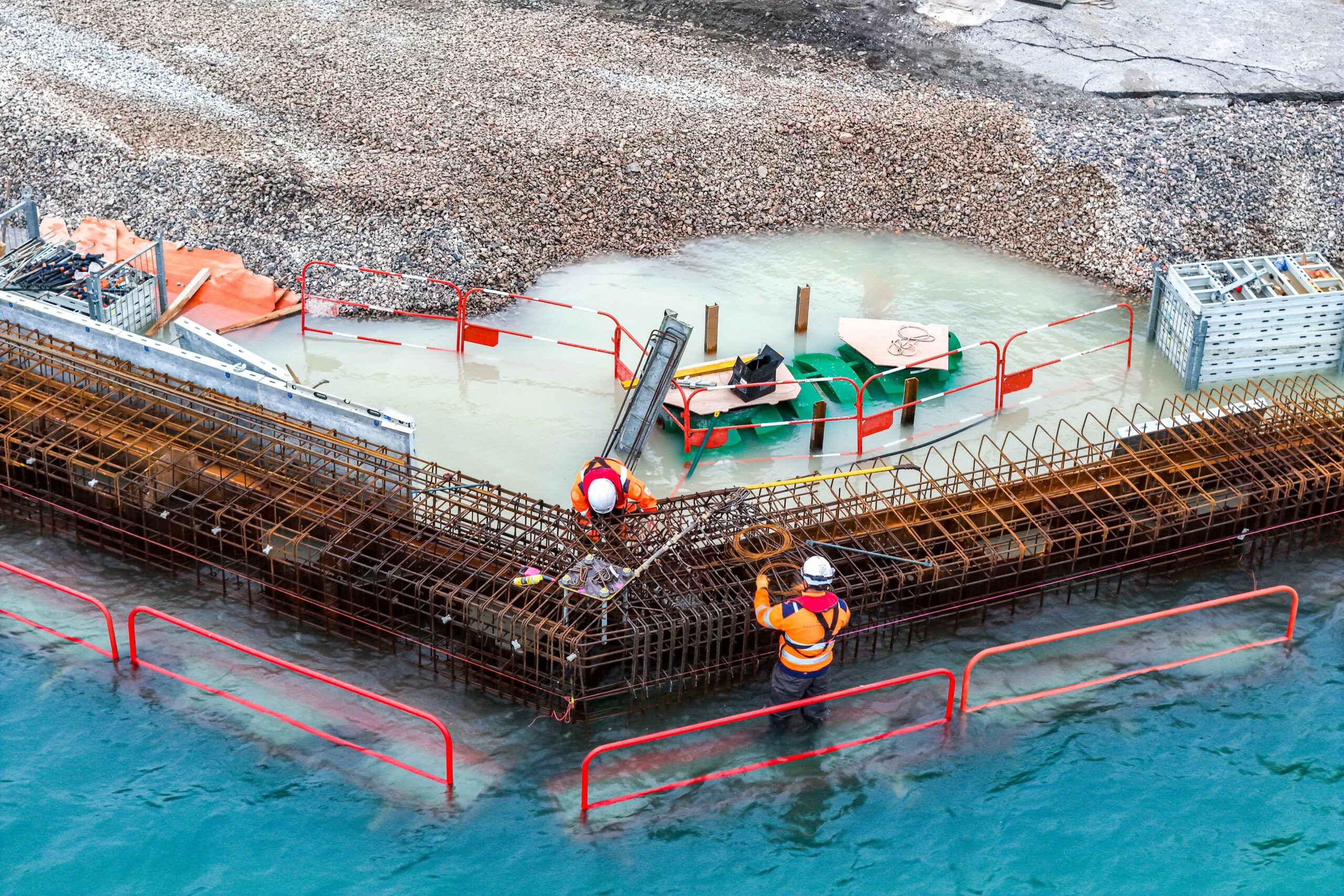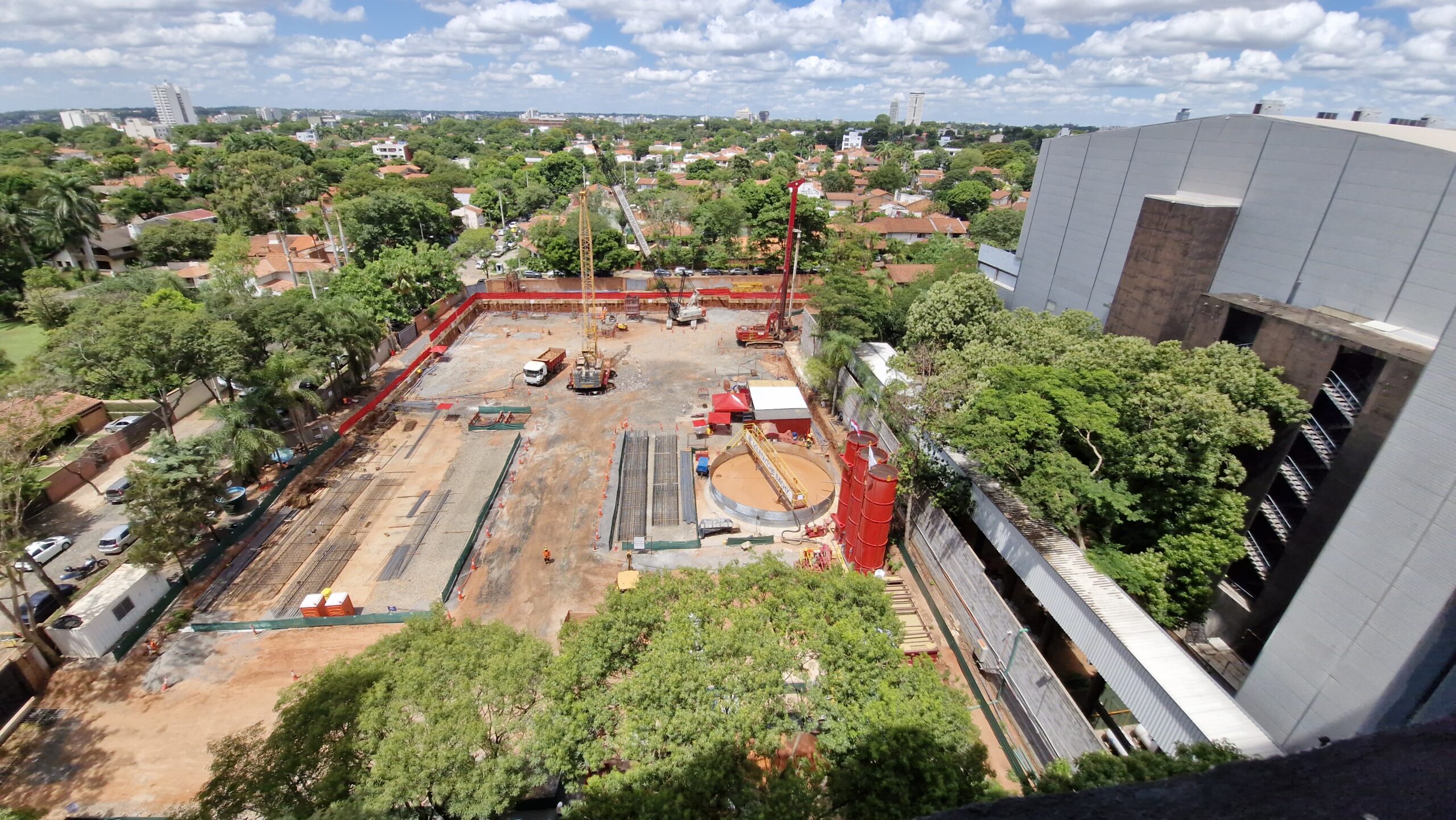30/01/2024
Nicholson Construction is involved in the construction/rehabilitation of the new Lock at the Soo in Michigan.
Every year, almost 10,000 freight boats pass through the 3 locks at the Soo. These infrastructures are over 100 years old, so regular maintenance is essential to keep traffic moving. With this in mind, Nicholson was commissioned to rebuild and extend one of the locks.
In 2019, the U.S. Army Corps of Engineers is launching the construction of a new lock at the Soo, on the St. Marys River in Michigan. It is from this access point that over 10,000 freighters transit, carrying more than 86 million tonnes of cargo across the Great Lakes every year.
The rehabilitation project is divided into 3 different phases:
- Phase 1: deepening of the upstream to allow access for larger boats
- Phase 2: rehabiliting of the upstream approach walls that guide ships through the lock
- Phase 3, to be carried out between 2022 and 2023: demolition of the existing, ageing “Sabin” lock to build a new 34-metre-wide, 366-metre-long lock.
In a joint venture with Kokosing Alberici Traylor, Nicholson was commissioned to carry out part of phase 3 of the project, including the installation of a grount curtain, the construction of several drilled shafts for the bridge linking the power station and the lock, the installation of anchors and finally an upstream combiwall to support the lock.
The grout curtain
To cut off water infiltration during the excavation phase for the new lock, Nicholson teams built a 610-meter-long grout curtain. One of the main difficulties on this part of the project was the very low tight tolerances.
The wells
To bridge the gap between the lock and the complex’s power station, Nicholson’s teams, in collaboration with Soletanche Bachy Canada, built 20 shafts to accommodate the bridge piers. Also for this phase, 3 difficulties were encountered: limited access to the site, difficult drilling conditions and tight tolerances.
Anchors
For the third part of the project, 35-meter-deep permanent anchors were installed close to the existing “Davis” lock to stabilize the monoliths, very wide concrete walls that form the lock chamber.
The combiwall
Finally, for the last stage of phase 3, the teams built a combiwall. This wall is made up of 9 pipes 1,145mm in diameter and 7.6 metres deep, positioned between sheet piling. It holds back the soil during the excavation phase and prevents water from seeping in.
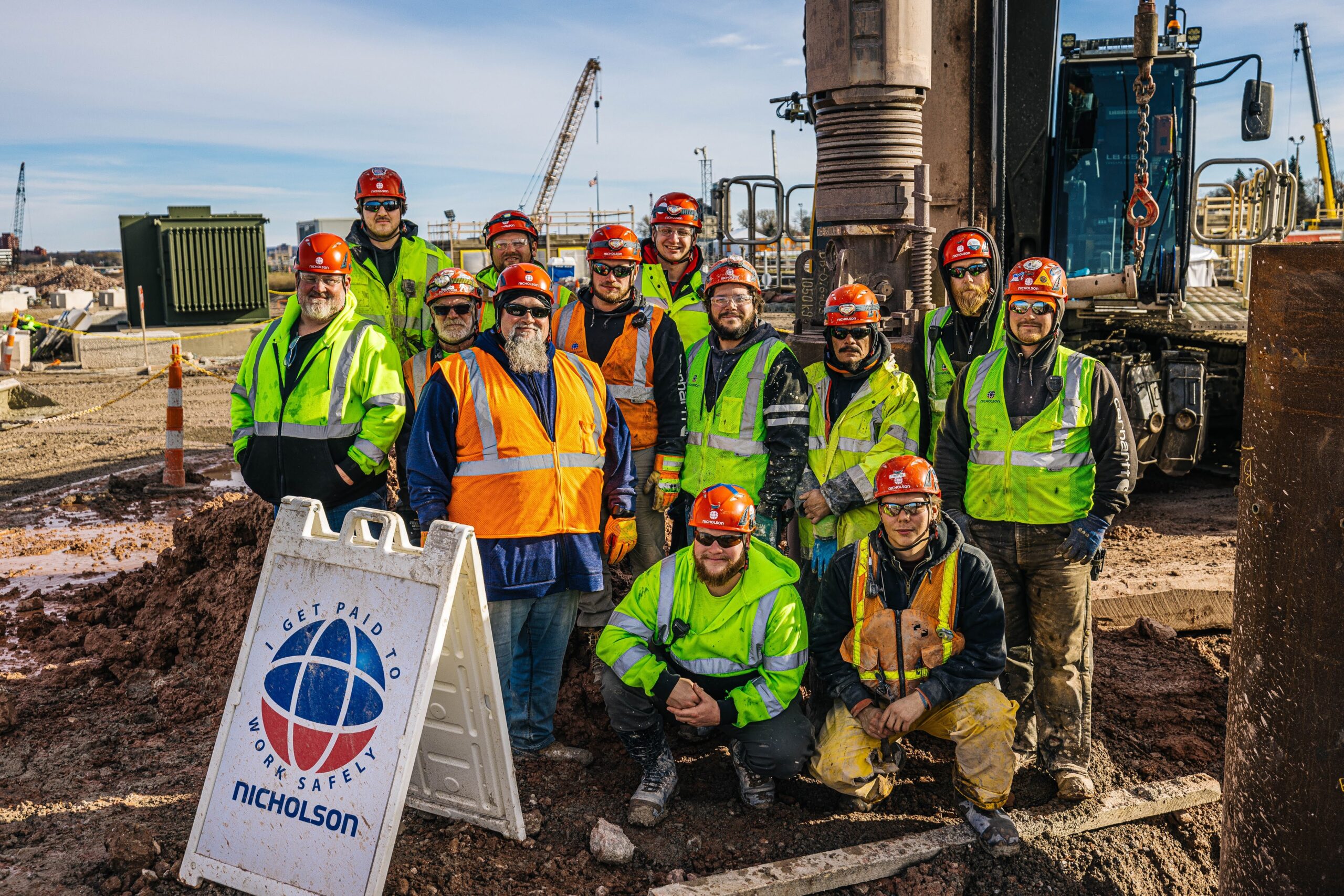
Nicholson used a drill supplied by Berminghammer, our Canadian subsidiary specializing in equipment manufacturing. A great synergy between our American and Canadian teams.
Phase 3 of the project is scheduled for completion by 2030. This extraordinary and vitally important project has been masterfully carried out by the Nicholson teams – congratulations!
